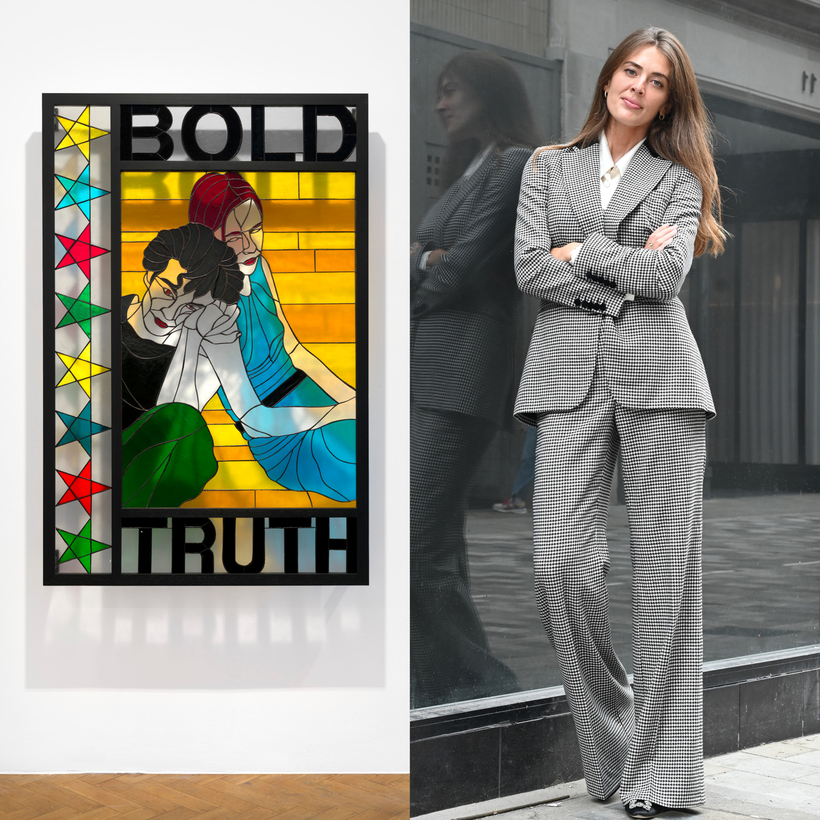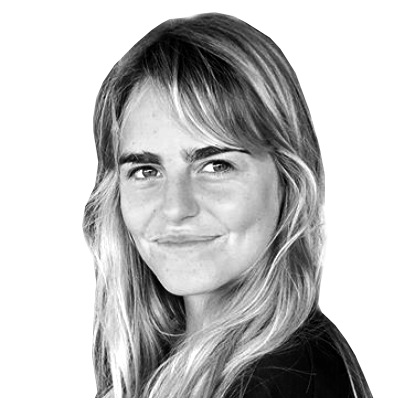Growing up in London, Lucca Hue-Williams always knew she would have an art gallery one day. “It’s been a dream my whole life,” she says. “It wasn’t a question of how, but a question of when.”
Hue-Williams, 26, opened Albion Jeune, a sleek, 1,300-square-foot gallery on Little Portland Street, last October. The opening coincided with London’s Frieze art fair, and friends from around the world attended the inaugural exhibition, Esben Weile Kjaer’s “I Want to Believe,” in which the Danish multi-media artist set up a stained-glass room decorated with skulls and performed a “dance of death.” The reviews were overwhelmingly positive. “The London art scene just got bigger,” Wallpaper declared.

After the first show, the gallery closed for three months for a revamp by the minimalist architect John Pawson, who is also behind the Design Museum’s new London space. Next week, Albion Jeune will open its second show, “Thought to Image,” featuring work by the Saudi Arabian painter Alia Ahmad, whose vivid paintings are meant to echo the feel of Middle Eastern deserts.
“I have a really clear memory of the moment when I first entered her studio, in Riyadh, in 2020,” says Hue-Williams. “The kingdom was on the cusp of a cultural transformation.”

Though Albion Jeune is new to the art world, Hue-Williams certainly is not. Her father, Michael, owns Albion Barn & Fields sculpture park in Little Milton, Oxfordshire, which features architectural projects built in situ by artists including Sir David Adjaye, Richard Woods, and Vito Acconci. “The name [Albion Jeune] is very deliberate,” she says. “I’m not hiding my background, but rather I’m drawing on it.... This is the next generation of artists.”
While Hue-Williams studied art history in high school, her career in art wasn’t solidified until college. As a sophomore at the Courtauld Institute of Art, in London, she took a trip to New York and went to the Guggenheim Museum. She saw the exhibition “Art and China after 1989: Theater of the World,” which included work by two generations of Chinese artists, and was stunned. “I was always drawn towards China and how important it is today on the political stage,” she says. “But that exhibition really cemented that.”

Hue-Williams sent an Instagram message to Philip Tinari, a co-curator and the director of U.C.C.A. Center for Contemporary Art, in Beijing, asking to work for him. After a rigorous interview process, she got the job.
She moved to Beijing in September 2019, but before she could settle in, the coronavirus pandemic hit. She returned to the Courtauld to do a master’s in contemporary Chinese art and geopolitics.
In July 2021, Hue-Williams rejoined the U.C.C.A. team as a production and curatorial assistant for the inaugural Diriyah Biennale, in Riyadh. “It was the first-ever event of its kind in Saudi Arabia,” she explains. “Figuration still isn’t allowed.... There aren’t art schools in Saudi Arabia.” Eventually, Tinari and Iwona Blazwick, the director of Whitechapel Gallery at the time, advised Hue-Williams to open her own gallery.

Hue-Williams has big plans for her gallery. In June, Miles Greenberg and Douglas Gordon will show their work. Four months later, the gallery will exhibit work by Taiwanese-born artist Su Yu-Xin and publish an accompanying book.
Meanwhile, Hue-Williams is busy thinking about how she can bring new voices into the oversaturated London art scene. “The gallery is really about the artists,” she says. “I’m working 16-hour days. It’s pretty tiring. But it’s about creating that platform for them. It’s all I’ve ever dreamt of.”
“Thought to Image” opens at Albion Jeune, in London, on May 2
Elena Clavarino is a Senior Editor at AIR MAIL


